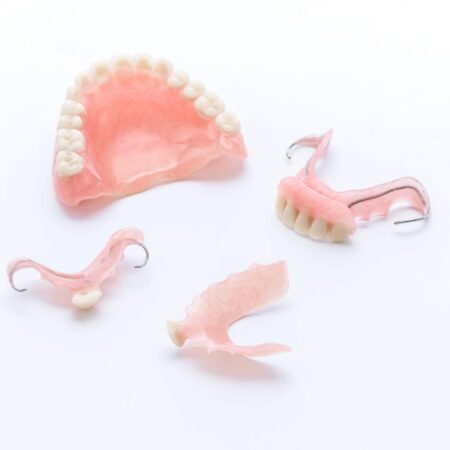Porcelain Veneers or Braces? Which one to Choose?

If you want the perfect smile, you have plenty of cosmetic dentistry options to help you achieve the natural smile that features your personality. The question is, which treatment option is the best fit for you? Some of the most popular treatment options that people choose for fixing their smiles are porcelain veneers and braces. Both are very different in terms of the treatment itself, but they both have fantastic results for those looking for a better, healthier smile. There is arguably no treatment in cosmetic dentistry as versatile and transformative as porcelain veneers.
Orthodontic treatment or dental braces primarily straighten the teeth, while veneers assist in changing the shape, size, and shade of the teeth. In certain cases, you have to combine both treatments, in order to completely change one’s smile as illustrated in the patient case below.
What Are Braces?
Orthodontists use dental braces to shift and move teeth gradually over time. They also use them to correct misalignments of the teeth and address various abnormalities related to the bite.
Treatment time varies by individual requirements, but on average patients spend between one and three years in braces. Orthodontists primarily use orthodontic treatment or dental braces to straighten the teeth, while veneers help change the shape, size, and shade of the teeth.
Traditional braces consist of brackets attached to the front of the teeth, dental professionals cement stainless steel bands onto the teeth, arch wires attach to the brackets to guide tooth movement, and small elastic bands attach to the brackets. Dental braces have a broad range of shapes, styles, and accessories, allowing wearers to personalize their look.
Advantages of Braces
Orthodontic Treatment with braces leaves your teeth intact, so they are a non-invasive way to straighten your smile. Additionally, braces can correct alignment issues with the jaw or bite, which can affect your overall health. Left untreated, malocclusions (misalignments) can cause many physical problems including:
- Tension headaches
- Inflammation of the jaw joints (TMJ)
- Earaches
- Neck pain
- Receding gums
- Loose teeth
- Tooth loss
Limitations of Braces
Most people consider the biggest drawback of braces to be the treatment time, as well as the long-term aftercare needed to maintain results.
After completing the treatment period in braces, individuals usually wear a retainer to prevent their teeth from reverting to their original positions. Typically, you will need to wear a retainer continuously for several months following the removal of your braces and then at night for several more years.
What Are Dental Veneers?
Dental veneers are thin, custom-made shells of tooth-like material designed to cover the front surface of the teeth to improve their appearance. Porcelain Veneers: Resist stains and mimic the light-reflecting properties of natural teeth. They are routinely used to fix:
- Discolored teeth could be from a variety of reasons such as the result of root canal treatment, medications, excessive fluoride use or filled cavities that have changed the appearance and color of the tooth
- Teeth that are worn down, chipped or broken
- Teeth that are irregularly shaped or have gaps between them
To determine whether dental braces or porcelain veneers are most appropriate, you and your cosmetic dentist will have to weigh the pros and cons of each option, as well as the factors in the health of your teeth and your cosmetic requirements.
May also interest you / Invisalign for Seniors: Why It’s Never Too Late.












